Best Used Car, Services, Auto Parts, Rent Car Available for Buy and Sell Near By Go Ahead
- Emerging Trends in Farm Equipment for 2025
- 2025 Agricultural Forecast: Key Trends and Predictions for Crop Production in India
- Best Tractors in India 2025: Top 10 Picks for Every Farm Size
- महिंद्रा मिनी ट्रैक्टर - कीमत, मॉडल, और सुविधाएँ
- Swaraj Price 2025: Latest Swaraj Tractor Price List and On-Road Rates in India
- Mini Tractors in India - Features, Prices, and the Best Options
- New Holland 3630 TX Super Plus+ Tractor Review 2025: Features, Price and Performance
- Full Review of New Holland 3600-2 TX All Rounder Plus Tractor: Features, Price and Performance
- Sonalika Tractor Price 2025 Complete List of Models, Series and Latest Offers
- Top 10 Farm Equipment and Tools in India to Boost Agricultural Efficiency
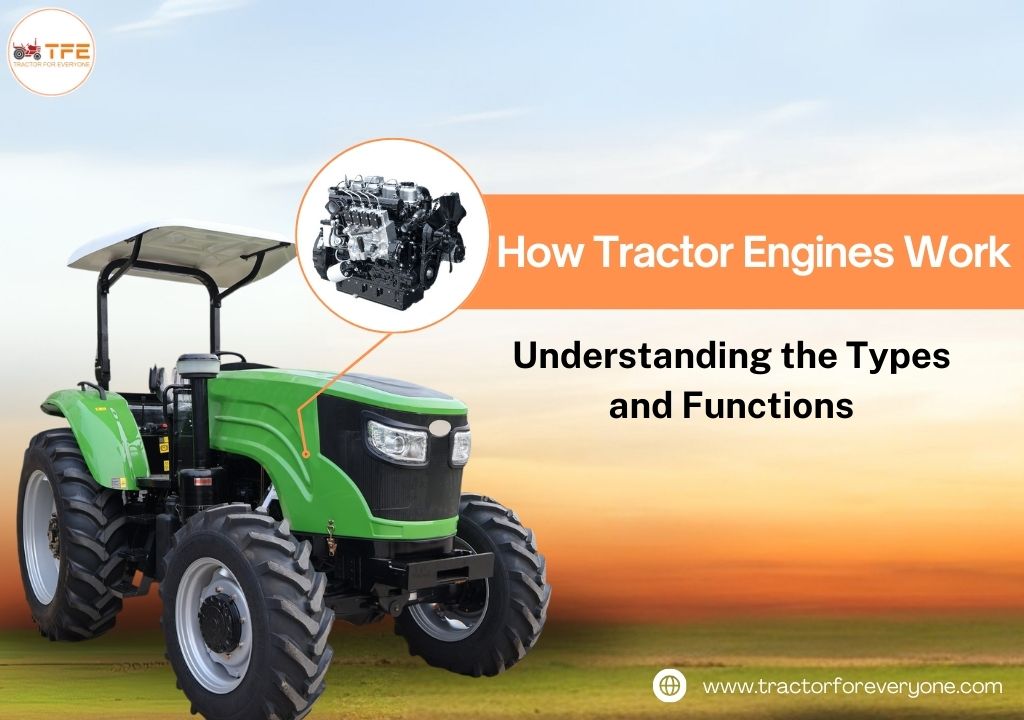
How Tractor Engines Work: Understanding the Types and Functions
Tractors are one of the most vital pieces of machinery in the agricultural sector. Whether you're ploughing fields, hauling heavy loads, or preparing your land for the next planting season, tractors make a variety of essential tasks easier. But have you ever wondered about the heart of a tractor—the engine? In this blog, we'll dive into how tractor engines work and explore the different types that are commonly used in agricultural machinery.
What is a Tractor Engine?
A tractor engine is the core power unit that drives all the functions of the tractor. It's responsible for converting fuel into mechanical energy that moves the vehicle and operates its implements. Just like any engine, the tractor engine is a complex machine that works through a series of processes to generate the power needed for the tractor to perform tasks efficiently.
Tractor engines are usually built to be durable and long-lasting, as they often operate under harsh conditions and for long hours. A tractor engine's design and performance can vary depending on the type of work it is meant to do. For example, smaller engines are used for basic tasks like tilling, while larger, more powerful engines are used for heavy-duty agricultural work.
The Basic Working Principle of a Tractor Engine
At its core, a tractor engine works similarly to other combustion engines. The basic operation follows these steps:
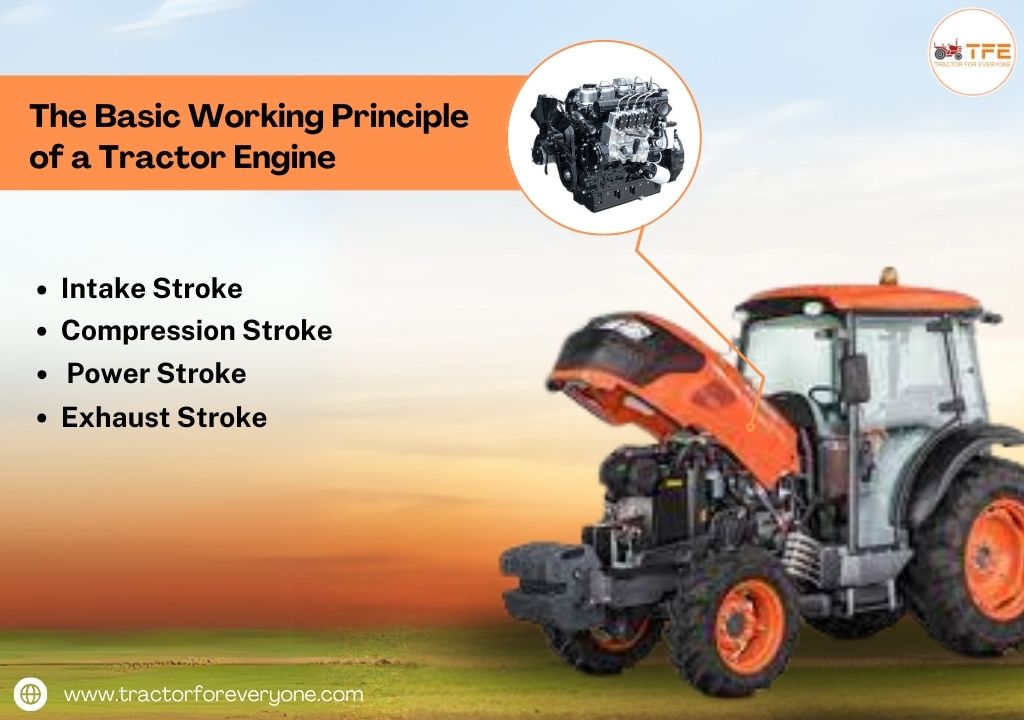
Intake Stroke
The intake valve opens, and the engine sucks in a mixture of air and fuel into the cylinder. The piston moves downwards during this phase.
Compression Stroke
The intake valve closes, and the piston moves upward, compressing the air-fuel mixture inside the cylinder. This makes the mixture highly combustible.
Power Stroke
A spark plug (in gasoline engines) or the compression itself (in diesel engines) ignites the compressed fuel-air mixture. This causes a small explosion, forcing the piston down, generating power.
Exhaust Stroke
The exhaust valve opens, and the piston moves upwards again to expel the exhaust gases from the combustion process. This completes one cycle of operation.
These four strokes—intake, compression, power, and exhaust—make up the basic engine cycle for both gasoline and diesel engines, though there are some key differences between the two. The power generated during the power stroke is transferred to the flywheel, which in turn powers the transmission system and other parts of the tractor.
Types of Tractor Engines
Tractor engines can be categorised into different types based on three key factors: fuel used, stroke cycle, and number of cylinders. Each type has distinct features and applications suited to various farming needs. Let’s dive deeper into each classification:
1. Types of Engines Based on Fuel Used
i. Gasoline Engines:
- Description: Gasoline engines are commonly found in smaller tractors designed for light agricultural tasks such as mowing, gardening, and light tilling. These engines use a spark plug to ignite the fuel-air mixture, producing combustion that drives the pistons.
- Advantages:
- Lower initial cost and manufacturing expense.
- Lightweight, making them ideal for compact tractors.
- Smooth and quiet operation compared to diesel engines.
- Limitations:
- Lower fuel efficiency; they consume more fuel during extended use.
- Limited power output, unsuitable for heavy-duty tasks like ploughing or large-scale harvesting.
ii. Diesel Engines:
- Description: Diesel engines dominate the agricultural industry due to their efficiency and durability. They rely on compression ignition, which makes them powerful and suitable for high-load tasks.
- Advantages:
- High fuel efficiency, providing more power per litre of fuel.
- Robust design allows them to handle heavy-duty tasks like ploughing, hauling, and harvesting.
- Longevity and ability to perform under continuous operation.
- Limitations:
- Higher upfront cost and maintenance expenses.
- Noisier and heavier, which may affect manoeuvrability.
iii. Compressed Natural Gas (CNG) Engines:
- Description: A relatively new entrant in the farming sector, CNG engines are gaining traction for their eco-friendly nature and cost-effectiveness.
- Advantages:
- Reduced emissions, making them environmentally friendly.
- Lower operational costs compared to diesel and gasoline engines.
- Limitations:
- Require specialised refuelling infrastructure, which might not be widely available in rural areas.
- Lower power output compared to traditional diesel engines, limiting their use in intensive farming tasks.
2. Types of Engines Based on Stroke Cycle
i. Two-Stroke Engines:
- Description: In a two-stroke engine, the power cycle is completed in two piston strokes (intake-compression and power-exhaust). These engines are simpler in design and compact in size.
- Advantages:
- Lightweight and portable, ideal for small-scale tasks.
- Easier and cheaper to maintain due to fewer moving parts.
- Limitations:
- Consume more fuel and are less fuel-efficient than four-stroke engines.
- Produce more emissions, making them less eco-friendly.
- Shorter lifespan compared to four-stroke engines.
ii. Four-Stroke Engines:
- Description: These engines complete a power cycle in four strokes (intake, compression, power, and exhaust). They are the most commonly used engines in modern tractors due to their efficiency and reliability.
- Advantages:
- Superior fuel efficiency, saving costs over long-term use.
- Produce less noise and vibration, offering smoother operation.
- More durable and reliable for heavy-duty farming tasks.
- Limitations:
- More complex design, leading to higher initial costs and maintenance expenses.
- Heavier and bulkier than two-stroke engines.
Also Read: Top 10 Agriculture Tools in India: Enhancing Farming Efficiency and Productivity
3. Types of Engines Based on Number of Cylinders
i. Two-Cylinder Engines:
- Description: Two-cylinder engines are compact and simpler in design, typically used in smaller or older tractors meant for light agricultural activities.
- Advantages:
- Compact and lightweight, suitable for smaller tractors.
- Easier to repair and maintain due to their simplicity.
- Limitations:
- Lower power output, which restricts their use to light or medium tasks like tilling or small-scale hauling.
- Can struggle with intensive operations such as deep ploughing or large-scale harvesting.
ii. Four-Cylinder Engines:
- Description: Found in mid-range tractors, these engines provide a balance between power and fuel efficiency, making them versatile for various farming tasks.
- Advantages:
- Balanced power and fuel efficiency, ideal for multipurpose tractors.
- Versatile, capable of handling tasks like ploughing, tilling, and transporting heavy loads.
- Smoother operation compared to two-cylinder engines.
- Limitations:
- Consume more fuel than smaller engines, though still more efficient than two-cylinder engines.
iii. Six-Cylinder Engines:
- Description: These engines are designed for large tractors meant for heavy-duty tasks such as deep ploughing, large-scale harvesting, and other demanding agricultural activities.
- Advantages:
- High power output, making them suitable for intensive operations.
- Fuel-efficient for their size and capable of long hours of operation without refuelling.
- Limitations:
- Higher cost due to their complexity and size.
- Heavier, which may reduce manoeuvrability in smaller fields or tight spaces.
Other Key Components in Tractor Engines
Apart from the engine type, several other components play a crucial role in the performance of a tractor engine:
Cooling System
Tractors work in tough environments, and the engine needs to be kept cool. The cooling system prevents the engine from overheating, ensuring consistent performance.
Fuel Injection System
The fuel injection system is responsible for delivering fuel into the combustion chamber. In modern tractors, this system is highly efficient, allowing for optimal power generation while minimizing fuel consumption.
Air Filtration System
Since tractors often work in dusty environments, a good air filtration system ensures that only clean air enters the engine, preventing debris from damaging the engine parts.
Exhaust System
Tractors emit exhaust gases that must be filtered and expelled. A well-designed exhaust system helps reduce emissions and maintain the engine’s performance.
Transmission System
The engine power is transmitted to the wheels via the tractor's transmission, which controls the speed and direction of the tractor's movement.
Conclusion
Understanding how tractor engines work and the different types available can help you make an informed decision when choosing the right tractor for your farming needs. Whether you're using a smaller gasoline engine for light tasks or a heavy-duty diesel engine for intensive agricultural work, the tractor engine is the heart of your machine, driving its power and efficiency.
By knowing the basic principles of tractor engine operation and the types available, you can ensure that your tractor runs efficiently and serves your needs for years to come. Keep in mind that regular maintenance and proper care are key to keeping your engine in top shape, ensuring that it operates at its peak performance.
Write a Comment
Popular Blogs
-
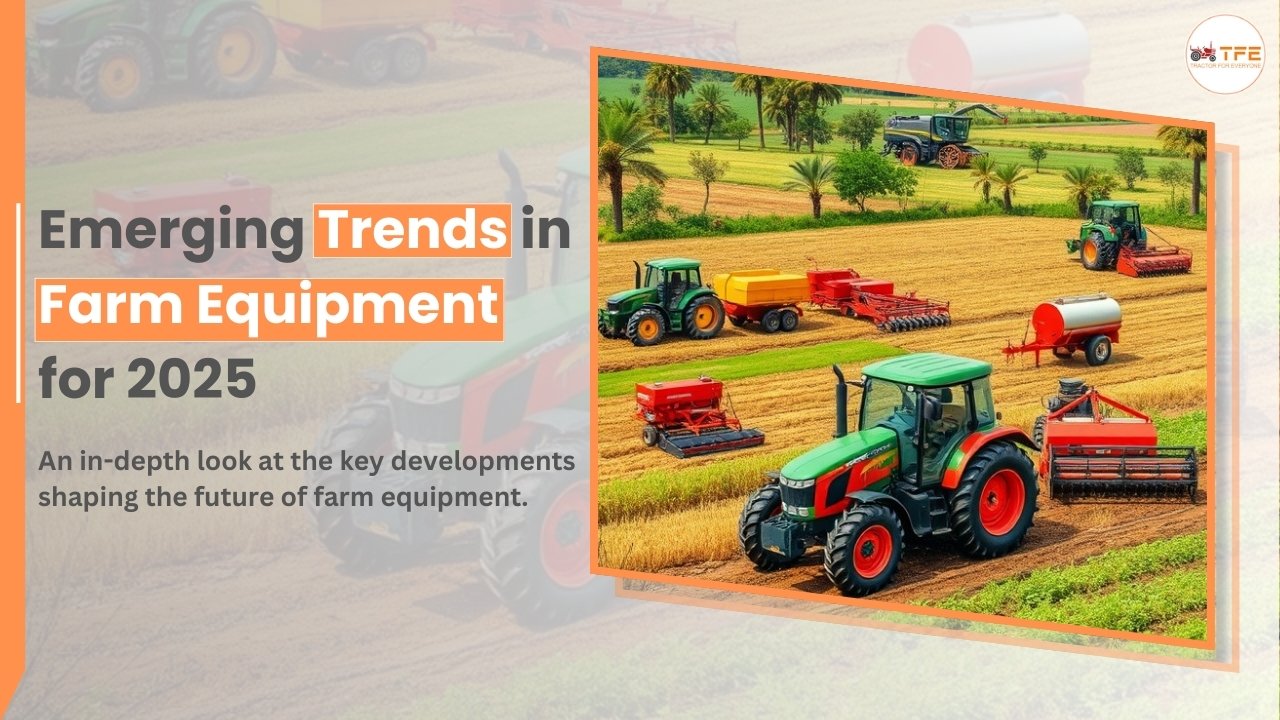
Emerging Trends in Farm Equipment for 2025
12/12/2024, POSTED BY ADMIN -
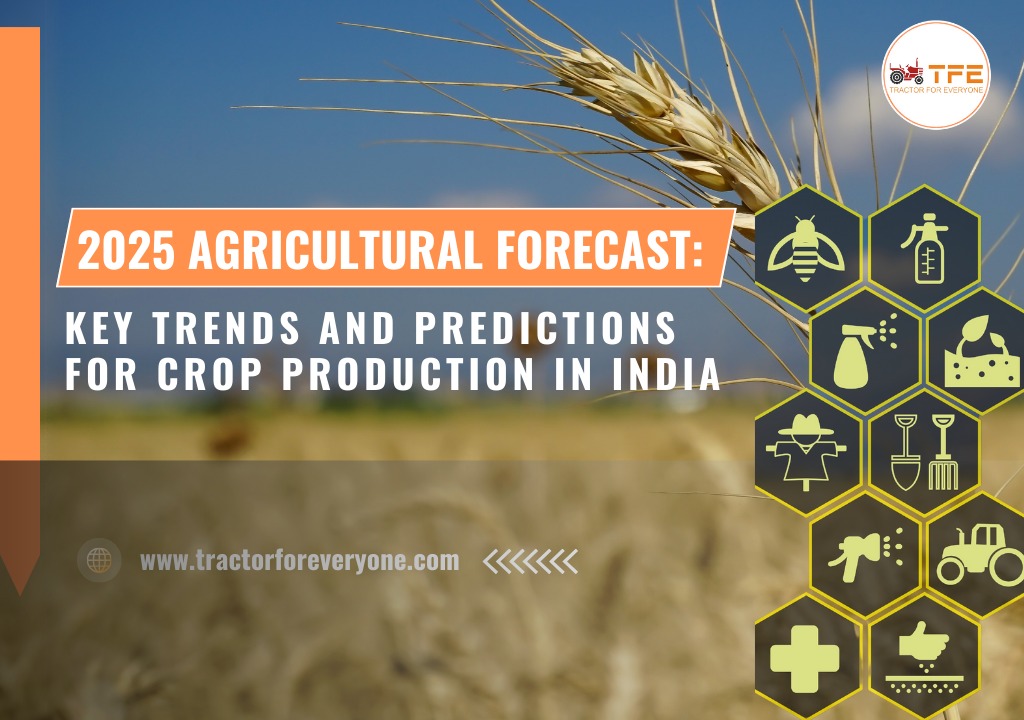
2025 Agricultural Forecast: Key Trends and Predictions for Crop Production in India
12/11/2024, POSTED BY ADMIN -

Best Tractors in India 2025: Top 10 Picks for Every Farm Size
05/29/2025, POSTED BY ADMIN -
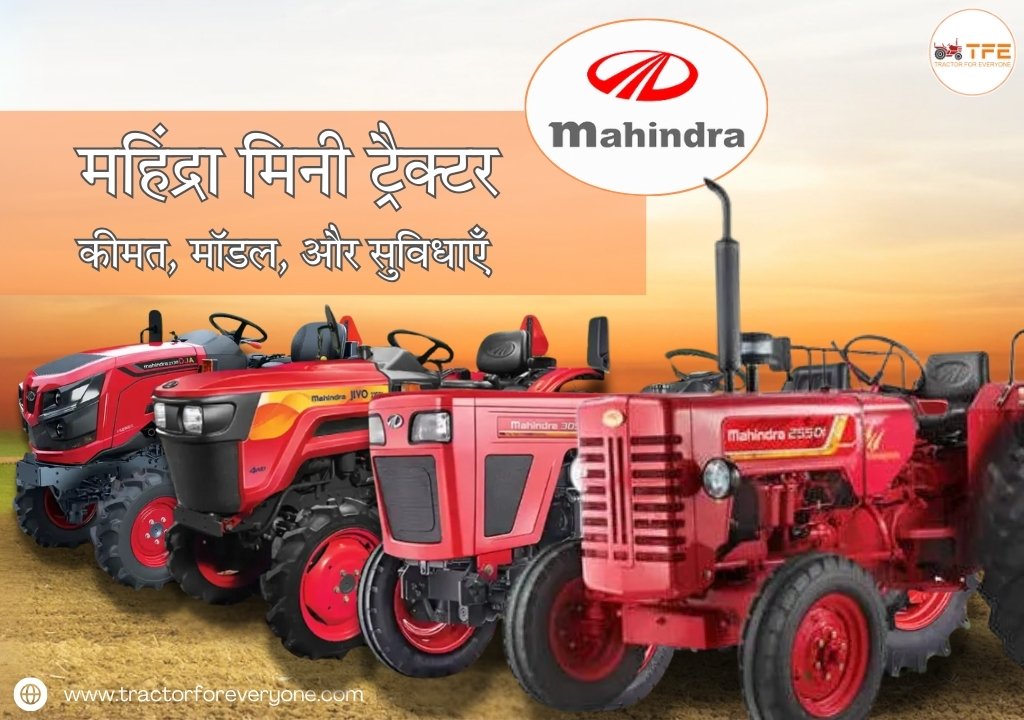
महिंद्रा मिनी ट्रैक्टर - कीमत, मॉडल, और सुविधाएँ
02/18/2025, POSTED BY ADMIN -
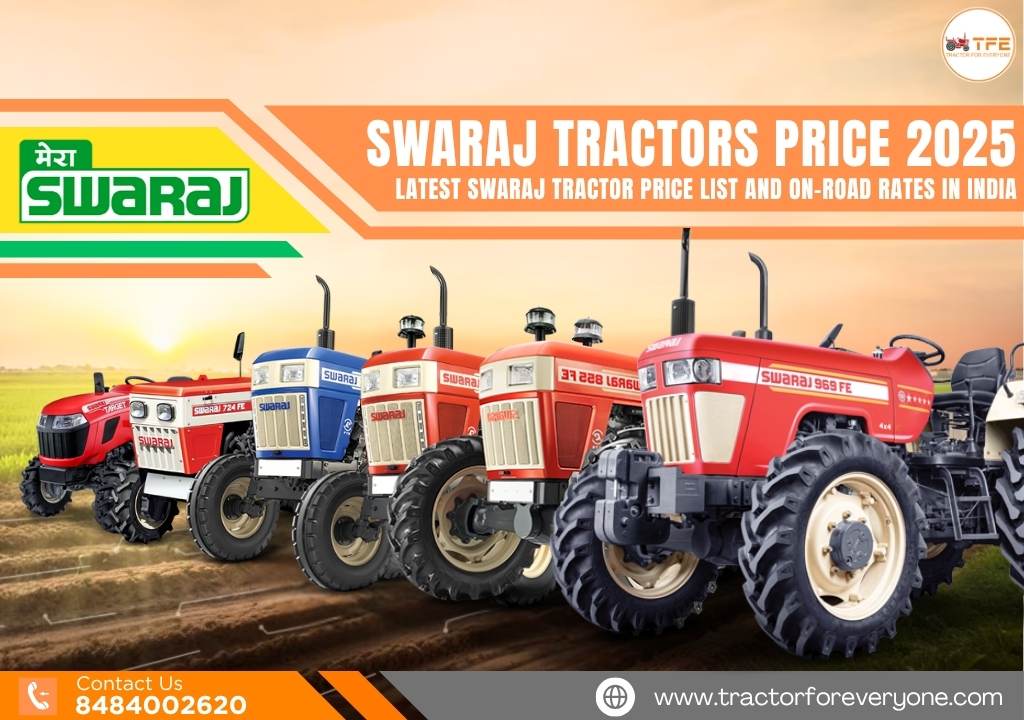
Swaraj Price 2025: Latest Swaraj Tractor Price List and On-Road Rates in India
07/24/2025, POSTED BY ADMIN

